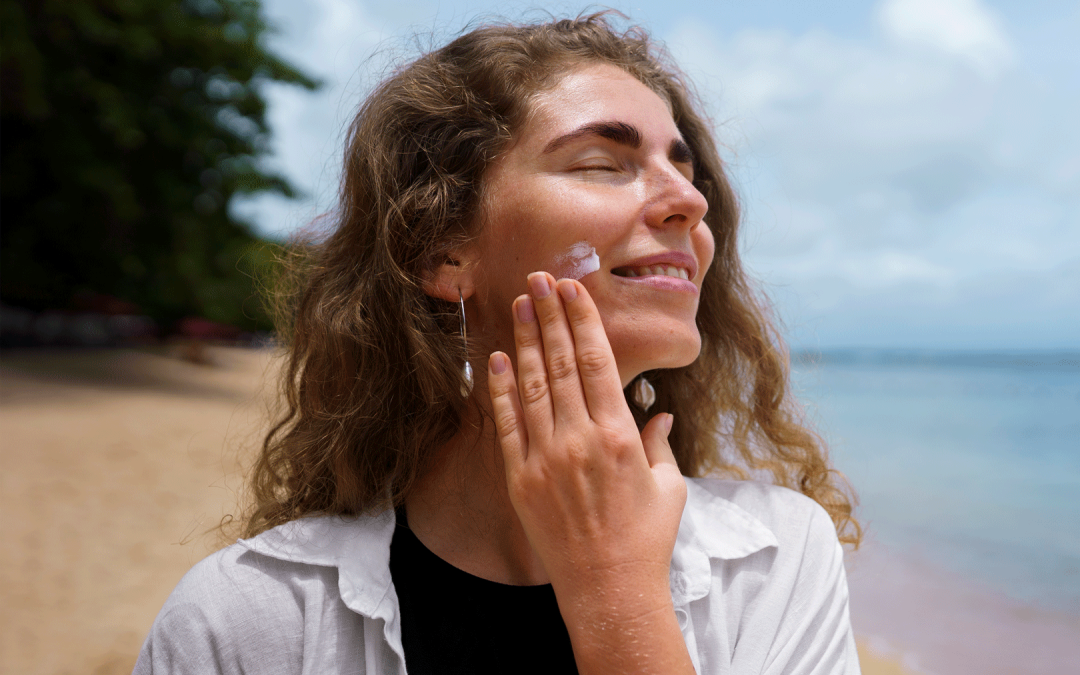The debate between mineral sunscreen benefits versus chemical sunscreens has intensified in recent years, with more consumers seeking safer, environmentally conscious options for sun protection. Let’s dive into why mineral sunscreens are emerging as the preferred choice for both health-conscious individuals and environmental advocates.
Understanding the Key Differences
The difference between chemical and zinc oxide sunscreens is in how they shield your skin. Mineral sunscreens, sometimes referred to as physical sunscreens, reflect and disperse damaging UV rays to form a protective barrier on the surface of your skin. Chemical sunscreens, on the other hand, absorb into your skin and use UV rays to generate heat.
The Benefit of Physical Barriers
- Takes immediate action upon application
- Instead of absorbing, it rests on the skin.
- Less prone to clogging pores
- Ideal for sensitive skin
Health Benefits of Going Chemical-Free
Making the transition to chemical-free sunscreen has several health benefits:
- Gentle on Sensitive Skin
- Less likely to cause irritation
- Perfect for skin prone to acne and rosacea
- Safe for use on infants and children
- Reduced Health Risks
- No chemicals that interfere with hormones
- Reduced possibility of allergic reactions
- No absorption of substances that could be harmful
- Immediate Protection
- There is no need to wait 20 to 30 minutes to get in the sun.
- Better protection all day long
Environmental Impact
There are clear environmental advantages to mineral sunscreens.
- Reef-safe formulations
- Biodegradable components
- No negative impacts on marine life
- Sustainable production techniques
How to Pick the Best Mineral Sunscreen
Key Factors to Consider:
- Zinc Oxide Percentage
- Look for products with 10-25% zinc oxide
- Higher percentages offer better protection
- Formula Type
- Lotions
- Creams
- Powders
- Sticks
- Additional Ingredients
- Moisturizing agents
- Antioxidants
- Natural extracts
Application Tips for Best Results:
- Apply generously
- Reapply every 2 hours
- Use extra product compared to chemical sunscreens
- Massage thoroughly to reduce white cast
Common Concerns Addressed
- White Cast
- Modern formulations are more transparent
- Tinted options available
- Proper application techniques help minimize appearance
- Texture
- New technologies have improved spreadability
- Various formulations for different preferences
- Lightweight options available
Making the Switch
Although switching to mineral sunscreen may involve some adjustment, the long-term advantages for environmental preservation and personal health make it worthwhile. To determine the ideal formula for your requirements, start with samples or travel sizes.
Conclusion
There is strong evidence to support the benefits of mineral sunscreen. From superior skin protection to environmental consciousness, mineral sunscreens offer a safer, more sustainable approach to sun protection. For consumers who are concerned about their health, switching to mineral sunscreens is becoming more and more alluring as studies continue to show the possible dangers of chemical sunscreens.
Always remember that the best sunscreen is the one you will use on a regular basis. Choose a mineral formula that suits your skin type and lifestyle, and then take pleasure in the peace of mind that comes with making a safer, greener choice.

